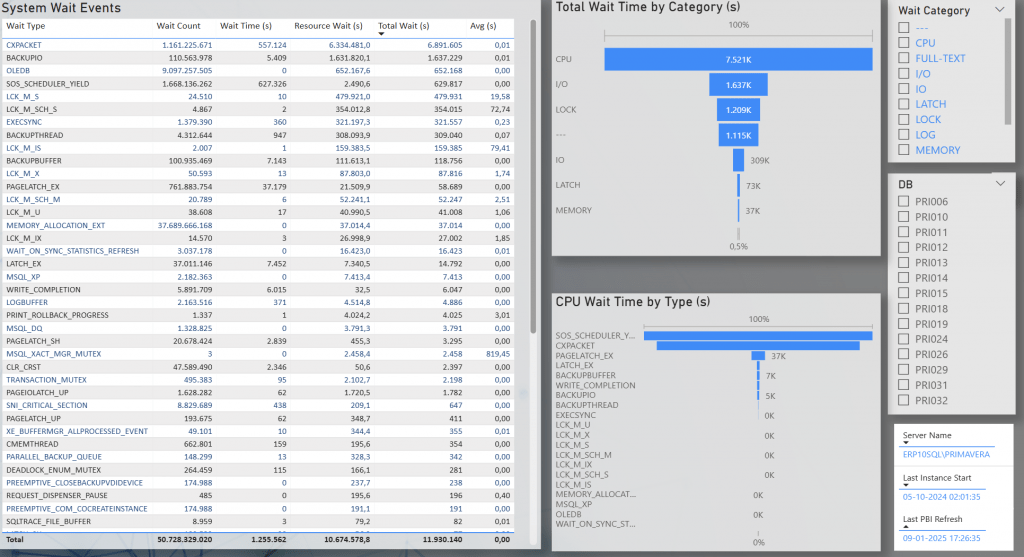In an increasingly data-driven landscape, database performance becomes critical to ensuring the efficiency and reliability of business operations. Diagnosing and optimizing these systems goes far beyond applying basic best practices — it requires a deep approach, technical expertise, and specialized tools.
In this article, we explore advanced diagnostic and optimization techniques, with a focus on SQL Server environments.
The process of optimizing a database is a complex and iterative task. It should always begin with a thorough diagnosis, relying primarily on Dynamic Management Views the system's Dynamic Management Views (DMVs) and Extended Eventsto identify the main bottlenecks (in SQL Server environments). The analysis focuses on the wait events issues detected, typically caused by problems such as I/O, locks/deadlocksexcessive parallelism, or heavy CPU usage.
The most common cause of these wait events is poorly designed queries SQL queries. Problems arise from poorly optimized queries, whether developed by users or generated through analyses ad-hoc performed using tools such as Excel, among others.
Embedded SQL is also sometimes responsible for performance issues, particularly through User Defined Functions User-Defined Functions (UDFs), when hundreds or thousands of iterative calls are made. However, many other scenarios may arise, and each must be addressed uniquely and appropriately according to its specific characteristics.

Optimization strategies include:
- SQL optimization, focusing on rewriting the most problematic and frequently used code;

- Table partitioning strategies, which can improve the management of large volumes of data;
- Index analysis and optimization, ensuring they are utilized and used in the most efficient way;

- Data compression, to reduce space and improve performance in certain scenarios;
- Analysis of locks and adoption of strategies for lock escalationin environments with high process parallelism, to mitigate concurrent processes that lock the same resources;
- Numerous other approaches, depending on the types of events identified and the client/environment’s specific scenarios.
The results are usually surprising, leading to significant performance improvements and, in some cases, eliminating the need for hardware upgrades.
How does B2F contribute to database performance optimization?
B2F has solid experience in database optimization, working from the diagnostic phase through to the application of advanced performance improvement techniques. Utilizing practices such as analysis of wait eventsquery optimization, index review, and table partitioning, B2F ensures that systems operate efficiently, even in environments with large volumes and complex data.
These practices are integrated into B2F’s Data Warehouse and Business Intelligence projects, ensuring not only improved performance but also scalability and reliability in decision support.





